
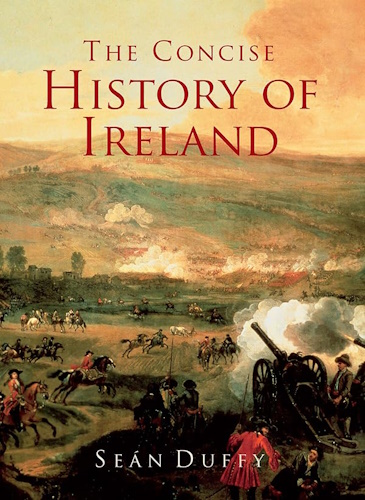
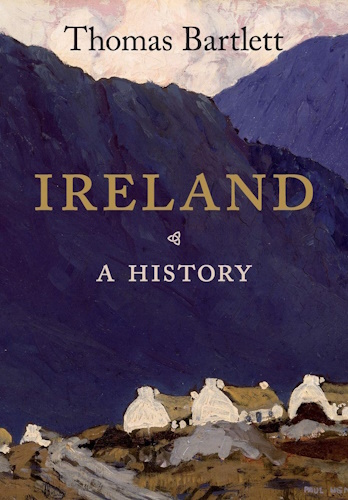
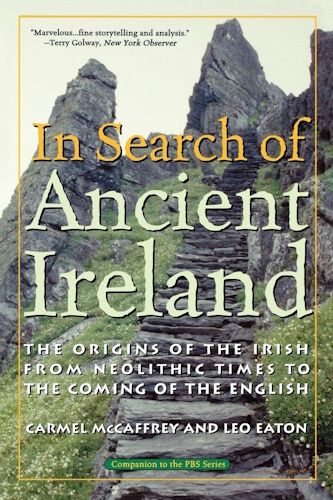


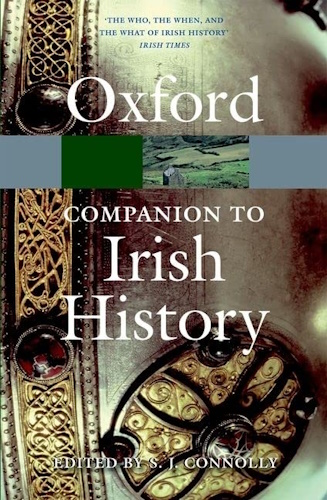
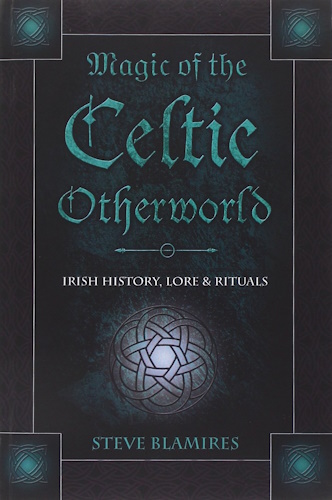
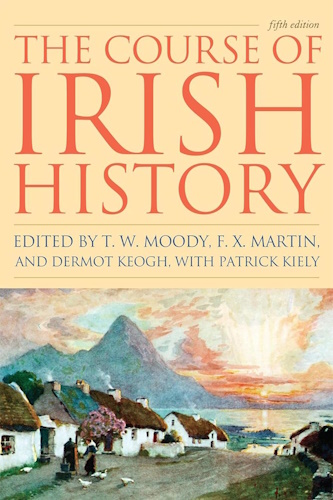
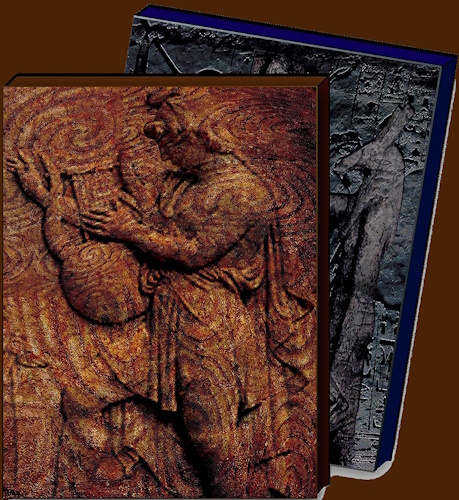
The Secret Founding of America
Appendix XVI to Volume II
of
The Irish Origins of Civilization
by
Michael Tsarion
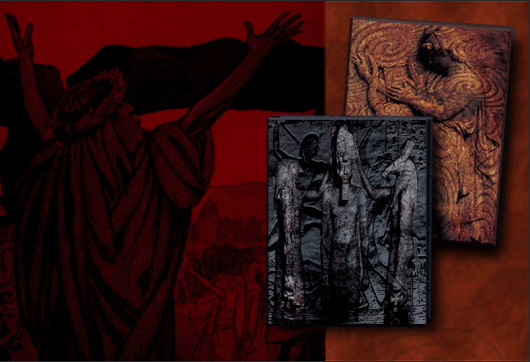
![]()
![]()
From
The Secret Founding of America
by Nicholas Hagger
.
...a constitution of government once changed from Freedom, can never be restored. Liberty, once lost, is lost forever - President John Adams
The Secret Founding of America, by eminent historian Nicholas Hagger, was published in 2007. It is one of the first and best mainstream books dealing with the roles, in the founding of America, of the Templars, Freemasons and Illuminati.
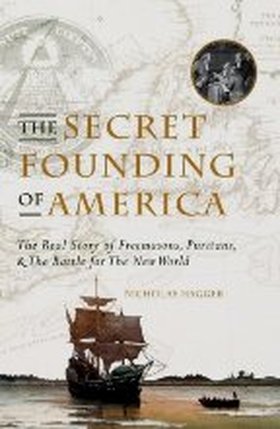
Hagger has written over twenty books on history, literature and philosophy, and has written for the Times of London.
The hardback edition of the Secret Founding, aims at a mainstream audience, and is well worth reading. The publishers saw to it that the book was released in time for the 400th anniversary of the Jamestown Landings.
In his previous book The Syndicate (2004), Hagger honorably cites researchers such as G. Edward Griffin.
Among other controversial authors mentioned by Hagger, in his sources section, are Baigent, Leigh and Lincoln (Holy Blood, Holy Grail), Nesta Webster (Secret Societies and Subversive Movements), Lady Queensborough (Occult Theocracy), Carroll Quigley (Tragedy and Hope), Stephen Knight (The Brotherhood), and Ralph Epperson (The Unseen Hand).
I believe that this type of book, which delves into secret societies, and which is written by an academic, is among the first of many to come. So-called "conspiratorial" subjects are becoming popular and more and more people are asking vexatious and penetrating questions about occulted history. Humanity's skepticism is increasing and people are clearly not as content as they once were to just continue believing what they have been told about history from conventional sources.
This turning of the tide has not gone unnoticed by the powers that be. In the past the establishment moved to silence authors and suppress literature that exposed the dirty big secrets of religion and politics. To a certain extent such suppression still goes on. However, the establishment has begun to use another tactic. It has begun, ever so gradually, to co-opt overtly controversial subject matter. The new tactic has been adopted because the power-brokers have finally realized that they cannot wholly suppress truth.
Lately, they appear to have decided to present controversial information in a sanitized form by way of writers under their control and from inside institutions of their making. The work of these authors poses no major threat whatsoever. Their sanitized ideas concerning the evils of the status quo can safely be presented to the masses. This strategy is effective. It ensures that real teachers remain suppressed or in the background. It is their hard-earned information that is craftily taken and artfully packaged and presented before the world by disingenuous publishers and media networks.
I recommend Nicholas Hagger's excellent books The Secret Founding of America, The Secret History of the West, and The Syndicate. I support and reference any book, movie or documentary that succeeds in exposing the truth about the world's insidious religious, political and financial institutions, as well as the camera-shy cabals working behind the scenes of world affairs.
Hagger expresses in a clear and concise manner how Freemasonry and Templarism insinuated itself into American political and social life. His book contains information that reinforces my long held belief concerning the complicity of Benjamin Franklin. Hagger shows that this "Father" of America was an Illuminati stooge. And for that revelation alone I am thankful that this book is in circulation. I suggest that it is read alongside Treason in America, by Anton Chaitkin and To the Victors Go the Myths and Monuments, by Arthur Thompson.
Below is a selection of excerpts from this immensely important work:
Overall Picture
In 1760 the map of North America showed a wide chunk of British control along the east coast from Maine to coastal Georgia, extending 100–200 miles inland, then native-American control of a buffer zone which separated the British from the French interior. In the south, Florida was Spanish
The population of the North American colonies had risen from 4,646 in 1630 to 1.6 million in 1760.
Portuguese Pioneers
The fifteenth century saw European mariners exploring the globe. The Portuguese were first, voyaging to Porto Santo off West Africa in 1418. In the course of the century they sailed as far as the southern tip of Africa and set up trading stations at Arguin, Sierra Leone and El Mina. In 1497 Vasco da Gama sailed round the Cape of Good Hope and up Africa's east coast, making possible Portuguese trade with India.
Portugal was then the westernmost country in the known world and there was great interest in what lay farther to the west.
Christopher Columbus, a sailor from Genoa who had married a Portuguese woman and settled on Porto Santo in the Madeira islands, read d'Ailly in Lisbon in 1483. He also read the works of Marco Polo, who had left for the East in 1271 and returned from China in 1292. He became convinced that the Earth was round, as (he believed) had been asserted in the prophecies of Isaiah 11.10–12, and the apocryphal Second Book of Esdras 3.17–19.
After an audience with Ferdinand and Isabella of Spain in 1486, Columbus tried to reach India from the west. Having sailed for 33 days, he landed on the island of Guanahami near the Strait of Florida in October 1492.
Whatever the truth of Columbus's voyage, it opened the way for more voyages to the New World.
Spain on the Scene
..the Spanish Catholics can claim to be the first planters in America, 42 years before before the 1607 Jamestown settlement.
Spanish Catholics preceded the Jamestown settlement and can claim to be the very first planters of America. One strategic reason for the founding of the Virginia settlement was to counter Spanish and French moves into the Americas.
Juan Ponce de León was with Columbus during the visit to Florida in 1493, which, at the request of Ferdinand and Isabella, emphasized the Christianization of the Indies.
Ponce de León stepped ashore at what is now St Augustine, which he named La Florida because of the luxuriant foliage of the place...In 1521 he returned with 200 men to find out whether Florida was an island, to establish a colony and to find the Fountain of Youth. Instead he found death – native Americans opposed his landing and drove him off, and in the course of the battle he was wounded by a native-American arrow and many of his men were killed. He returned to Cuba to die of his wound in 1522.
The next significant landing on Florida was in 1528, by Pánfilo de Narváez, a one-eyed veteran who had served in Cuba and Mexico.
Florida was first visited by Spain during Columbus' second voyage in 1493...Spain was now in competition for America: John Cabot had claimed North America for England in 1497 and 1498, and Amerigo Vespucci had discovered South America and claimed it for Spain in 1499.
St. Augustine was the northernmost outpost of the Spanish colonial empire for 256 years, between 1763 and 1783, when it belonged to England. The Floridans became Spanish once more from 1783 until 1823, when Florida became American under Andrew Jackson. So the Spanish Catholics can claim to be the first planters in America 42 years before the 1607 Jamestown settlement.
Of the European settlers, we have said that the Spanish can claim to be first. However the Catholic legacy in America was cancelled out by the Church of England and Puritan settlements further north. Indeed, it can be said that the English defeated the French and the Spanish in their struggle for the New World.
The Virginia Company
James I declared in the incorporation of the Virginia Company in November 1606 that it would bring glory in propagating "Christian religion to such people, as yet live in darkness and miserable ignorance of true knowledge and worship of God." He directed that the Virginia Company's President and Council should ensure that the "true Word and Service of God...be preached, planted and used according to the rites and doctrines of the Church of England."
In 1606 the Virginia Company of Plymouth had received a charter from James I for colonizing the northern coast of Virginia from 38 degrees to 45 degrees latitude north, farther north than the Virginia Company of London's territory. At the end of May it sent two ships to New England - the "Gift of God" under Captain George Popham and the "Mary and John" under Captain Raleigh Gilbert.
The company's work was carried out at high cost with little return - no gold was found - during the years before tobacco plantations and the slave trade began. In fact, this work might have been a causative factor in setting a trend of slave-owning in the American South. The company set the pattern of Southern landowning, slavery and exploiting native Americans.
By the end of the 1620s, when the population of Virginia was 2,500, most of the settlers' energy was going into the export of tobacco. Tobacco planters imported slaves from Africa, who were under the direct control of their masters. The Elizabethan landed values introduced by the 1607 planters had a new form, as feudal serfs called slaves were now tied to the land. By the 1660s the number of slaves began to rise and by 1670 the population of Virginia had climbed to 35,309. A 'slave-holders' Christianity grew up, and a 'slave-holding' religion that had nothing to do with the Christianity of Christ.
Robert Cecil
...in mid-December 1606, the First Virginia Company, which was dominated by Robert Cecil, the principal patron of the London Virginia Company and prime mover of the establishment of the Virginia Company, whose pro-God man, Christopher Newport, was to be admiral.
- Note: The Cecil family established the first intelligence network in the world, which became MI6. The Guinness family is a branch of the Cecil dynasty, purveyors of alcohol - Mtsar
Freemasonry in Early America
Because the English saw off the French and the Spanish, the Catholic legacy influenced the Founding Fathers less than a secret society that gathered influence among the Protestants: Freemasonry.
Despite the efforts of Catholics, Anglicans and Puritans, the founding of America owes more to this fourth group: the Freemasons in the Anglican-Puritan north.
...while religion was behind the first plantings, circumstantial evidence indicates that Freemasonry was also present and that a secret Deistic Freemasonry, subscribing to a non-Christian concept of God and hiding behind a religious facade, inspired the constitutional arrangements that prepared the way for today's superpower. Indeed, the first United States was a Masonic State.
From the very early planting days Freemasonry, spreading throughout the New World like a rampant strain of a new virus, presented itself as a method by which union could be achieved...Its network of secret societies afforded hierarchies in which all could rise, find a place, participate in rituals that drew on the earlier cultures, meet influential Masons socially and express ideas behind closed doors, a useful context of confidentiality in which all who questioned British colonial rule could operate without fear of being betrayed to the colonial authorities. Freemasonry came to have an enormous hold over early America.
We shall see that today Freemasonry has an agenda for a new world order, a federal-continental United States of the World in which nation-states are subsumed as states within regional blocs.
English Freemasonry became formalized in America in the 1720s, the first decade in which there are reports of American-based lodges. Before that, John Skene, a Mason of an Aberdeen lodge in 1670 (i.e. a Scottish, not an English, lodge), emigrated to New Jersey in 1682 and became deputy Governor. And Jonathon Belcher, an American-based settler, became a Freemason during a visit to England in 1704. In 1719 a ship called the Freemason did American coastal trade.
Francis Bacon
It has been claimed that Freemasonry is very ancient and goes back variously to the fifteenth-century BC Egypt of Tuthmose III, to the tenth-century BC Israel of the wise ruler Solomon and, more recently, to the medieval stonemasons and cathedral builders in York in 926 and Cologne in the twelfth century. Be that as it may, it is often held that English Freemasonry was founded by Francis Bacon who, in 1579, when he was 18, saw the need for studies to be secret among 'sworn brothers-in-arms.'
...it is likely that, at an impressionable age, Bacon was put in touch with a group whose symbolism was reflected in early English Freemasonry in 1579. This may have been a Pyrenean group of Cathar exiles who had fled from Montségur, southwest France, when the Cathars had been suppressed in 1244, or, more probably, a group of refugee Templars who had fled France in 1312 and had reacted to the burning of their leader Jacques de Molay in 1314 by forming a secret society across the border.
...it is possible that Bacon was in touch with secret Jewish knowledge on the borders of Spain and France while still in his teens.
Anthony Bacon
It is hard to believe that the 18-year-old Bacon just made Freemasonry up without being influenced by any preceding model. Manly Palmer Hall claims that he was initiated into a secret society in Navarre in France. His brother Anthony ran an intelligence service for the Earl of Essex there and was friendly with...the Protestant King of Navarre, the future Henry IV, King of France. Bacon lived in Paris with Sir Amias Paulet, the English ambassador to France, and acquired a knowledge of the French court.
Bacon, Dee and America
...he (Bacon) is listed in the 1609 charter as a shareholder of the Virginia Company of London and one of the 52 members of the Virginia Council (board of directors). As Solicitor-General, he also prepared the Virginia Company's charters of 1609 and 1612 for the king's signature, along with Sir Henry Hobart.
...Bacon threw his group's weight behind the English plans to colonize America. He looked back to John Dee, the Renaissance mage who had encourages voyage to America in the belief that a Utopian commonwealth could be established in the New World.
John Dee, the alchemist who is thought to have inspired Prospero in Shakespeare's Tempest, focused on the north-west. He laid the foundations for British imperialism by claiming that conquests by King Arthur had given Elizabeth I title to foreign lands such as Greenland, Iceland, Friesland, the northern islands towards Russia and the North Pole. He claimed that the New World was appointed by Providence for the British to influence and rule.
- Note: For more on Bacon's occult interests and influence, see Secret in the Bible, by Tony Bushby.
Bacon's "New Atlantis"
"New Atlantis" was about Utopia in the New World. It concealed the Secret Doctrine to create a New World and democracy within its Utopianism, and was a Masonic blueprint for America...Bacon suggests that England could become an Israelite England...Rosicrucian Freemasonry may have established itself in America in 1635 when missing works by Bacon were reputedly taken to Jamestown. These may have included the sequel to "New Atlantis" Bacon is thought to have written. This is believed to have included a timetable for fulfilling the Masonic plan for America.
Secret Templar Presence
It is possible that a Freemasonic faction may have been working within the Anglican ambience – James I had brought Templarism from Scotland to London in 1603 – and that clashes between Anglican and Masonic factions may go some way to explain the confusion. Without such a scenario it is hard to make sense of the many tiny confused events that comprised the settling of Virginia.
It has also been claimed that America was discovered in 1396, further back than the Chinese voyage or the voyages of the early fifteenth century. In that year Henry St Clair, Earl of Orkney and Lord of Roslin (now Rosslyn) and an early Templar – the St Clairs, it is claimed, were descended from the high priests of the Temple of Jerusalem – placed his fleet under the command of two sons of the Zeno family of Venice. Henry had met Carlo Zeno in 1364 and allegedly sailed with the Zenos to America, where they explored the north-east coast of what became Canada and interacted with the Mi'kmaq people. It is claimed that evidence for the voyage can be found in stone carvings on both sides of the Atlantic and in a strong oral tradition. The voyage was essentially Templar and it is possible that Templarism took root in North America in the lands St Clair is alleged to have settled...indicating a possibility that Templarism reached North America through the St Clairs of Rosslyn over 200 years before before the Jamestown voyage.
Going further back, there have been claims that Phoenicians, Romans, Ghanaians, Welsh (Madoc), Irish (Brendan), Vikings, Templar fleets (sailing from Brest), fishermen from Portugal and France, men of Bristol and English pirates (culminating in Hawkins and Drake) all traveled to America across the high seas, questioning the tradition that it was discovered by Columbus.
- Note: See America B.C. and Saga America, by Barry Fell, not cited by Hagger.
Templar Freemasonry turned the philosophical idea of Freemasonry into a means of securing political power. Its goals were political rather than occult and philosophical (as was Baconian Rosicrucianism). It sought – and still does – to transform the world into a world government, a 'universal democracy', eventually a universal republic – a New Atlantis.
It should be thought of as a kind of secret intelligence service with a large network rather than a system of closed lodges where strange rituals take place.
Templarism shaped the America into which the Founding Fathers were born every bit as much as English Rosicrucian Freemasonry. All the Founding Fathers and American revolutionaries belonged to Templar lodges.
From the time Franklin joined the Templars in the 1770s, Templar Freemasonry controlled American politics.
Of the 56 who signed the Declaration of Independence, Independence, nine according to some, 53 according to others, were Freemasons. The first President, George Washington, had been initiated as a Rosicrucian Mason in the lodge at Fredericksburg, Virginia, in 1752 and become a Templar Mason by 1768.
Puritanism and Rosicrucianism
At the Masonic Congress of 1663 it was decided that the Rosicrucians' beliefs should be incorporated into English Freemasonry.
Rosicrucian Freemasonry may have established itself in America in 1635 when missing works by Bacon were reputedly taken to Jamestown. These may have included the sequel to New Atlantis Bacon is thought to have written. This is believed to have included a timetable for fulfilling the Masonic plan for America.
...so close were Puritanism and Rosicrucianism in essence that it can be said that the Puritan philosophy was actually Rosicrucian. So it could be that some of the post-Mayflower Puritans Puritans who joined the Plymouth settlement as reinforcements brought Rosicrucianism with them and over a period of time it passed into Freemasonic lodges.
Puritanism, especially Dutch Puritanism, was strongly linked to Rosicrucianism. For example, John Wilkins, Frederick V's chaplain, was closely linked to Rosicrucianism in the Palatinate and tutored Frederick and Elizabeth's son when he was sent to England. Wilkins co-founded the Royal Society when the Invisible College met in his rooms at Wadham College, Oxford, from 1648 to 1659, and he had a deep connection with Puritanism. Samuel Hartlib...was the link between Andreae and Oliver Cromwell, and was the central figure of an invisible reforming group to England...Cromwell himself frequented a Rosicrucian Masonic Lodge called (bizarrely) Crown. He could only have gained admission if he was a Rosicrucian Freemason.
In 1733 Rosicrucian Freemasonry formally entered America when St John's Lodge was established in Boston. It became the Masonic capital of Britain's American colonies. By 1737 there were lodges in Massachusetts, New York, Pennsylvania and South Carolina,24 all committed to implementing the plan for a Utopian New Atlantis. We can now begin to see how Rosicrucian Freemasonry affected the founding of America through the Founding Fathers of the eighteenth century.
In February 1731 Franklin became a Rosicrucian Mason25 and in 1734 Provincial Grand Master of Pennsylvania. He worked for Freemasonry's one-world agenda.
- Note: See my articles on the ancient dynasty which has worked through the centuries to Socialize the world.
Thomas Jefferson, the writer of the Declaration of Independence, was also a Rosicrucian, and a Rosicrucian code was discovered among his papers.
The federalism that finally united the 13 colonies into states was identical to the federalism of the Grand Lodge system of Masonic government which had been created in Anderson's Constitution of 1723, when the first Grand Lodge appeared in America.
Freemasonry was therefore behind the independence movement and devised a concept of independence and the structure that would follow independence.
Benjamin Franklin and the New World Order
...Rosicrucian Freemasonry affected the founding of America through the Founding Fathers of the eighteenth century. Benjamin Franklin, a Boston boy who moved to Philadelphia, was set up in business by the Royal Governor of what was now a Crown colony, Sir William Keith, in 1724...In February 1731 Franklin became a Rosicrucian Mason and in 1734 Provincial Grand Master of Pennsylvania. He worked for Freemasonry's one-world agenda.
In 1753 Franklin had become Deputy Postmaster General for the colonies, which meant he had access to all letters and communications and was in effect a spymaster. In 1756 he was admitted to the Rosicrucian Royal Society for discovering that lightning was electricity. In 1757 he went to London to represent Pennsylvania in a dispute...and he spent until 1762 in England and France. He was initiated as a Rosicrucian in London during his stay there. He was again in England from 1764 to 1775 and discovered Baconian English Freemasonry's Secret Doctrine to create a New World or 'philosophical Atlantis' in America, the Masonic blueprint that Bacon had concealed in his "New Atlantis."
Franklin and the Great Seal of the United States
Franklin convinced Jefferson and Adams that they should use a Masonic seal that had come into his possession - which is now the Great Seal of the United States. Freemasonry was therefore behind the independence movement and devised a concept of independence and the structure that would follow independence.
The Illuminati
In December 1781 an understanding was reached between the Grand Orient Freemasons and the Illuminati and a combined order was adopted. The Illuminati, now hidden within the Grand Orient, moved to Frankfurt and spread throughout Germany and Austria.
The Grand Orient Templars absorbed Weishaupt's degrees and the Illuminati's activities continued within the Grand Orient and Scottish Rite Templar lodges.
- Note: The Templars were formed in the twelfth century by the superior Order of Sion, that continued to exist through the centuries. One had to pass through the Templar degrees to become an initiate of Sion. The Illuminati was also a recruitment society with a Deist philosophy that ran contrary to Christian doctrine. After the Illuminati was suppressed, it merged with Grand Orient Masonry and has been under cover since the eighteenth century. The Scottish Rite, Grand Orient and Strict Observance systems of masonry, imports from Scotland, was dedicated to the world supremacy of the Stuart dynasty, and all Templar organizations were dedicated to the rule of the Merovingian nobility of France, Scotland and Holland. The Illuminati's libertine communistic disposition attracted many intellectuals and nobles throughout Europe. There have been several major and minor internal rivalries between leaders of the various top secret societies, leading to events which changed the course of European and American history. One mustremove the covers of Catholicism and Protestantism in order to ascertain what is really the case with societies of this kind. (Here for more...)
...the Illuminati's attitudes were taken back to America by the two ambassadors to France in the 1780s, Franklin (in 1785) and Jefferson (in 1789), hence the gift (in 1885–6) of the Statue of Liberty to the American people from the people of France to symbolize the revolutionary links between America and France.
By 1785 there were 15 Illuminati lodges in the 13 colonies. The Columbian Lodge of the Order of the Illuminati was established in New York City and its members included Clinton Roosevelt, an ancestor of Franklin D. Roosevelt. A lodge in Virginia was identified with Thomas Jefferson.
The Illuminati were now entrenched in America, and the men most responsible for bringing them there were Franklin, Jefferson and John Adams.
- Note: Eventually, after falling out with Jefferson, Adams (father of John Quincy Adams) repudiated masonry. (Here for more...)
Three letters by Adams on this matter are in the Wittenburg Square Library in Philadelphia.
- Note: Remember, however, that there is no such as the Illuminati, even though the second and sixth US Presidents and their colleagues (all secret society insiders), openly declared the opposite. John Adams himself (the second President of the US) was a bone fide Illuminati member. So powerful were the Illuminati in America that they were able to incorporate their personal symbolism onto the one-dollar bill. The prevalence of the number 13 on the bill (appearing cryptically and openly about seventeen times), recalls Friday 13, the day in 1314 when Templar Grand Master Jacques de Molay was executed. (Here for more...)
...we have seen that Illuminatist Freemasonry, a more malign and Satanistic influence deliberately hidden within the Grand Orient by Weishaupt, came to America with the Great Seal.
Weishaupt's programme of world government has guided the world-government thinking of what I call the Syndicate, a network of powerful billionaire families that work in the USA and Europe for the end of all nation-states, and also the Grand-Orient thinking that brought about the creation of the Soviet Union as a stepping-stone to the creation of a world government.
...the American Templar and Illuminatist strains of Freemasonry lead towards world government, one in a more benign way than the other.
Declaration of Independence
The Declaration of Independence was read from the balcony of the Council Chamber of the State House to citizens of Philadelphia assembled in the square below on 8 July 1776 and the Liberty Bell was rung...The Declaration was signed a month later by 56 signatories.
On 2 July, two days before publishing the Declaration, Congress voted for independence. War with the British government was now inevitable.

Thomas Paine (1737-1809), the American patriot and revolutionary, was the first to demand complete independence from Britain. Thomas Jefferson, John Adams, James Wilson and Alexander Hamilton, were reluctant and still wished to preserve British control. In fact, had Britain not acted so belligerently, it is highly unlikely that America would ever have moved toward a complete sociopolitical break with Britain. Even after the War of Independence, many Americans remained loyal to Britain and did not support American causes. Some of these traitors belonged to eminent families who long plotted to subvert the independence of the colonies.
Virtually all - 31 out of 33 - of the military generals under Washington were Freemasons, including Richard Montgomery, David Wooster, Hugh Mercer, Arthur St Clair, Horatio Gates, Israel Putnam, John Dixon, Joseph Frye, William Maxwell and Elias Dayton.
- Note: So despite the highfalutin jingoism and flag-waving, independence was really something desired and initiated by Masons, with little actual allegiance to any specific country. As Hagger ably shows, their motives were the establishment of a global world order. Their pretense of patriotism and nationalism served as a cover for their overall agenda. Although it makes exciting reading in the history books, it was simply an expedient ruse, serving as a temporary device while the Templar-Masonic cabal worked toward attaining their particular utopian vision of humanity and the world. Until today, the "worker ants" haven't caught on or realized they've been well and truly used and abused from day one.
Power of Catholic Spain
Under the peace settlement following Cornwallis's surrender, the western boundary of the USA was the Mississippi. Britain retained Canada, Spain received the area from Florida to the Mississippi and everything west of the river.
- Note: The power of Catholicism and the Papacy in America is a vast subject that cannot be explored in detail here. But as we see, the Spanish and Portuguese were the first settlers and missionaries in America, arriving before the Protestant Dutch and British. Even after the War of Independence they retained millions of acres of land. The papacy stood back and watched the War of Independence with interest. They cherished the Protestant loss of life, and soon after fomented the Civil War (1861-1865) in order to enlarge their territories and expand their dominion over the continent. The papal power was also alive and active in Mexico at the time, since the Austrian ruler of Mexico - Emperor Maximilian I (1830-1867) - was a Catholic, his dynasty and geopolitical interests closely related to the royal houses of Spain. Without Catholic France's geopolitical muscle, he would never have ruled in Mexico.
King George Washington?
The economy was in depression and the national government had inherited a war debt of $60 million. The revolutionary soldiers had not been fully paid. In 1781–2 the victorious general, George Washington, wintered with the Continental Congress in Philadelphia. He made efforts to secure payment for the army, and in 1782 received a letter from Colonel Lewis Nicola urging him to use the army to make himself king. Washington indignantly declined. He seems to have believed that America would become a monarchy and also in the necessity of the principle of monarchy, but kingship contradicted his Templar Freemasonic philosophy, which was republican.
- Note: How many Americans realize that the 13 states were generally self-serving and corrupt, and that Washington was tempted to proclaim himself monarch over the colonies? How many know that the original title of the president was "His Excellency?" So much for the Illuminati's alleged anti-royalist pose. How many know that the federalist system was conceived by Freemasons, and purposely designed to permit secret societies to operate behind all sorts of political, religious and commercial fronts? (Here for more...)
Just as Weishaupt had based the organization of his Order of the Illuminati on the Jesuit structure, so Dr Anderson based his Constitutions on the regulations of the Jesuits' society of Jesus, even to the point of pinching their title.
- Note: This confirms that the Templars, Masons andJesuits are to be considered affiliated societies working toward the same goals.
St Ignatius of Loyola (1491-1556) had already written his Constitutions, in which he had laid down that his followers should abandon the chanting of the divine offices, physical punishments, penitential dress and chapter government for the more authoritative regime of his order. When he died there were 1,000 Jesuits divided into 12 administrative units called provinces.
- Note: So the original 13 states were based on the Jesuit Order's pattern. These "states" are in fact estates of the oligarchy - the Black Nobility. (Here for more...)
By 1787, the Masonic federal system was already operating in the 13 colonies, the states being independent internally but units of the federal government externally. There was a federal union of sovereign states, with a federal government to operate that union, based on internally independent lodges within a federal Grand Lodge.
- Note: On the dollar bill, above the eagle's head, we see the motto: From the Many, One. This certainly pertains to the Masonic ideal, of many countries and nations coming together to form a United World Order. America was their testing ground for the theory. Individuals and states were awarded a measure of sovereignty and autonomy only in so far as they contributed to the experiment, falling in line with it. It isn't actual freedom, only temporary provisional liberty, dictated by |Masonic overlords. The Statue of Liberty was imported by American Masons from their French cousins, and erected to embody this geopolitical experiment. The Articles of Confederation finally gave way to the US Constitution, whereby the slaves are provided with the requisite governmental system, giving them the illusion of freedom and self-governance. Behind the parchment idolatry and flag-waving, the American branch of the world masonic oligarchy continues working toward their global dystopia.
Henry C. Clausen has brought out the parallel between the federal American constitution and the federal Masonic lodge, writing, 'The significance of Freemasonry's influence on the Constitution cannot be overstated,' and: 'Since the Masonic federal system of organization was the only pattern for effective organization operating in each of the original Thirteen Colonies, it was natural that patriotic Brethren should turn to the organizational base of the Craft for a model. Regardless of the other forces that affected the formation of the Constitution during the Constitution Convention in 1787, the fact remains that the federalism created is identical to the federalism of the Grand Lodge system of Masonic government created in Anderson's Constitutions of 1723.' (See Masons Who Helped Shape Our Nation, by Henry C. Clausen)
The 55 delegates at the Constitutional Convention included the Freemasons Benjamin Franklin, now 81, and George Washington, who had led the American army against the most powerful nation on Earth, arrived at the convention the day before it opened and was unanimously chosen President. He could not speak in the debates during the next four months, but his aide-de-camp, Governor Edmund Randolph of Virginia, was his mouthpiece. Randolph proposed that there should be an entirely new basis for the constitution rather than an attempt to tinker with the Articles of Confederation, thus it was the Freemason Washington who was behind the move to scrap the old constitution.
- Note: Let us not forget that the Declaration first included the word "subject" not "citizen." The latter term was written over the former which remained there behind it. That means that the conscious mind sees "citizen" while the subliminal entry connotes something quite different. We're dealing with a crafty masonic rite in which the clueless slave of the oligarchy is implanted with a false image of himself, his country, and his sociopolitical role in the hierarchy. (Here for more...)
By July 1788 the constitution had been ratified by the nine states required to bring it into law, thanks to Washington's quiet authority.
- Note: So the people went for it. Everyone votes for a dictatorship, especially one with a smile. Federalists, like Madison, favored the Constitution which offered states limited powers under the supreme governance of the federal (secret) government in Washington DC. Anti-federalists, like Patrick Henry, opposed the Constitution and wanted states to possess completely sovereign status. To these men the federal government operated too much like a monarchy. They pushed for the Bill of Rights, hoping to further empower ordinary folks. Of course, although it was commendable to be on guard against a monarchist system, it doesn't prevent the operation of other equally sinister forms of tyranny. Whatever system of enslavement was chosen by the states and people, the masonic networks were prepared to adapt themselves to it and carry on regardless. (Here for more...)
I submit that the constitution intentionally removed sovereignty from the 13 states to a Freemasonry-dominated national central government so that Freemasonry could dominate America in accordance with the Atlantis plan. In short, the Founding Fathers had staged a coup against the states.
- Note: Hagger stresses his theory that the states were legally denied full sovereignty because of the masonic preference for world government, which fully sovereign states might have opposed. The Constitution and Declaration simply enabled the secret controllers of America to get more of what they planned and wanted. In any case, they'd have made the best of any political system chosen by the witless war-weary masses.
Masonic Control in America
Templar Freemasons now occupied every dominant position in the State. Their plan, to establish a democratic nation in the New World, had been implemented.
...many of the Founding Fathers who took part in the War of Independence, the signing of the Declaration of Independence and the drawing up of the Articles of Confederation and the constitution were Freemasons.
At the time of his election in 1789, the first President, George Washington, was Grand Master of Alexandria Lodge no. 22 in Virginia. His Vice President, John Adams, was also a Freemason. The oath of office was administered by Robert Livingston, Grand Master of New York's Grand Lodge. The Marshall of the day was a Freemason, General Jacob Morton. Washington's escort was General Morgan Lewis, a Freemason. The Bible used for the oath was a Masonic edition from St John's Lodge no. 1 of New York.
Three of Washington's first Cabinet of four were Freemasons: Thomas Jefferson, head of the Department of Foreign Affairs, Edmund Randolph, Attorney General, and Henry Knox, Secretary of War...Twenty-four of Washington's major-generals and 30 of his 33 brigadier-generals were Freemasons, so it would be extraordinary if Alexander Hamilton had not been a Freemason.
We have already seen that of the 56 signers of the Declaration of Independence, 53 may have been Master Masons31 and that the model for the constitution was based on Anderson's Constitutions, so the design of the new State was literally Freemasonic, as were its incumbents. In 1789 the first United States dollar bill had a four-sided pyramid based on the Great Seal, suggesting a Freemasonic attempt to stabilize the currency of the new republic.
Looking back on the 1780s, it does seem that the Founding Fathers hijacked the economies of the states for Freemasonry.
- Note: Full proof of this was provided by the masons themselves, in the design of various important cities, particularly Philadelphia and Washington DC. The numerous masonic symbols and motifs incorporated into the architecture reveals the hidden hand at work in the founding of America to even the most skeptical person. (Here for more...)
Rothschilds & the Civil War
...Rothschilds controlled the North via August Belmont, later financial adviser to the President, and the South via Judah Benjamin, Secretary of State for the Confederacy, and the Slidell/d'Erlanger family.
- Note: Hagger believes the Civil War, of 1861, was another attempt by the British government to undermine the American colonies which defeated them during the War of Independence. The colonies were not particularly strong or bonded after the war. Madison's second American bank had failed, and there was massive debt. Many wealthy colonists had deserted America for Canada and Britain, and many more were not pleased that lucrative trading between themselves and the British had been curtailed. The British took full advantage of this discontent. They precipitated the war of 1812, and later the all-important and more well-known Civil War. They cunningly commissioned Jewish and Catholic agents - such as the Rothschilds - to secretly operate in the South, providing the money and goods needed to foment and perpetuate the conflict. Thus it appeared to most that it was a Jesuit or Catholic plot which aroused the South. Indeed, it was deliberately planned to appear that way. Giuseppe Mazzini, Adriano Lemmi, Judah Benjamin and Albert Pike were among the agents directed by the British government. They and other members of Scottish Rite (Templar) Freemasonry were instrumental in orchestrating the conflict for their British and European masters. The Masons saw to it that many spies and fifth-columnists were positioned in key positions in the ranks of the Northerners.

General Albert Pike (1809-1891) was the grand master of Freemasonry and head of the American branch of the Illuminati. He established a secret order within Masonry called the "Palladium Rite." The word Palladium derives from Pallas Athene, revealing the influence of the sinister goddess cults of antiquity. It also connotes phallus, revealing the homosexual complexion of the Rite, and of Masonry in general. Masonry as we know it, like Templarism, was a branch of a wider highly secretive orgiastic network which included many Orphic and Gnostic sects. That we have numerous pedophile priests today is no accident, and is not in any way a new phenomena. Pike was found guilty of treason, but due to his superior status within Masonry, his accusers backed down and pardoned him. Northern President Johnson was given higher Masonic status for issuing the pardon. Pike was penalized less for his treason than a loser at a game of cards.
Before his accession to these Masonic positions Pike secretly organized the rebellion of the Southern states against the United States, using the Sovereign Jurisdiction of Scottish Rite Freemasonry to conceal his conspiracy.
Most of the political and military leadership of the Confederacy was composed of Freemasons under Pike's secret command. He also controlled the Knights of the Golden Circle.
The very word 'Confederate' recalls the Articles of Confederation preceding the constitution that established the United States and suggests the constitutional arrangementbefore the Union.
Tsar Helps Northerners
Lincoln was aware that these troop movements were to press him to create a central bank and he asked Russia for help. Alexander II, Tsar of Russia, gave him his support. He sent a large fleet to the ports of New York and San Francisco and placed it under Lincoln's orders.
- Note: How many know this? How many know that later, in 1870, during the presidency of Otto von Bismarck, in Germany, an alliance was pending between Germany, Russia and America, and that it was only due to the machinations of Catholic France that it was sabotaged. The triumvirate would have changed the face of the world, and prevented the Bolshevik Revolution the first and second world wars, and many other catastrophes from occurring thereafter.
Russia had emancipated the serfs in 1861, and Lincoln, eager to cement the alliance, issued his Emancipation Proclamation to free the slaves on 1 January 1863.
British Agents Send Arms to South
Thomas House, whose father was an agent for the Rothschilds back in England, made a fortune smuggling arms from Britain to Texas. His son, a 33rd-degree Freemason, gave himself the title 'Colonel' and later advised Woodrow Wilson.

Colonel Edward Mandell House (1858-1938) was the sinister British agent and brain behind the presidency of Woodrow Wilson. His father Thomas House supplied arms to the Southern States during the Civil War. Mandell House was a 33rd degree Freemason.
Lincoln was hated by Freemasons. He had prevented them from taking over America and from establishing a central bank and had restored the Union. British Freemasonry planned to kill him, using the Knights of the Golden Circle, in particular their member John Wilkes Booth, a 33rd-degree Mason and member of Mazzini's Young America.
In Booth's trunk coded messages were found. The key to the code was discovered in the possession of Judah Benjamin, the Rothschild agent who had fled to England, where he died. Investigations showed that he had given the order for the assassination.

Judah P. Benjamin (1811-1884), the Jewish British agent who, according to Nicholas Hagger, ordered the assassination of President Lincoln.
Palmerston, the British Prime Minister from 1859 to 1865 and a 33rd-degree Freemason, was also involved in the assassination assassination plot. He had links with Mazzini - he had persuaded the British Parliament to fund Mazzini's Grand-Orient insurrection in Italy from 1848 to 1865 - and was directly implicated

The federal capital of Washington DC was and is the zone from which the Masonic government oversees the United States. The federal system ensured that a sovereign administration stood apart from the rest of the colonies and states. Working in a manner analogous to a company or corporation, its elected orselected President serves for four years. Yes, America is merely that - a company or estate of the world's Black Nobility. Those who declared "eternal war" on America won the day, as they knew they would. Today those who state facts like this are condemned as "conspiracy nuts," even though it's all there in the official records and confirmed by eminent historians. As Hagger shows, America was never truly a "Christian" country, despite the rhetoric and jingoism about Pilgrims and Puritan founding fathers. American is 100 percent Masonic. The design of the major cities bespeaks this loudly enough, for those with symbolic literacy and pattern recognition. Moreover, although America's presidents and governors are sworn in on a Bible, the book they swear oaths upon is actually a Masonic Bible. Their hands touch not the Bible but the Compass and Square.
Masonry Inc
The Masonic Bible from the altar of St John's Lodge no.1 in New York City, a Templar Freemasonic lodge, that was first used during the inauguration of George Washington was later used for the inauguration oaths administered to Warren G. Harding, Dwight D. Eisenhower, Jimmy Carter, George Bush Sr and George Bush Jr.
...many state governors, senators and Congressmen are Freemasons. There is a Grand Lodge in every state. Newt Gingrich and Bob Dole are 33rd-degree Freemasons, as was Barry Goldwater. Jesse Jackson and Ross Perot are also Freemasons.
Since Weishaupt, deception has masked Freemasonry's drive to create a world government and its agenda includes hidden strategies based on Masonic self-interest to a degree that might shock the Founding Fathers if they were to come back and witness them today.
Out of British Freemasonry came a number of new secret societies in the twentieth century: the Round Table (1909–13), the Royal Institute of International Affairs (RIIA, 1919), the Council on Foreign Relations (CFR, 1921), the Bilderberg Group (1954), the Club of Rome (1968) and the Trilateral Commission (1972). All these offshoots of Freemasonry urged world government.
Membership of these sub-Masonic bodies is vital for politicians wanting to get on in Britain, Europe and America, and especially since the Second World War many Western leaders have been members of one or more of these groups. Since 1945 every US presidential candidate has been a CFR member.
President Nixon appointed more than 100 members of the CFR to his administration. Bill Clinton was a member of the CFR, the Bilderberg Group (whose meeting in Baden, Germany, he attended in 1991) and the Trilateral Commission.
A network of families and commercial interests has grown up around these sub-Masonic secret organizations, which elsewhere I have called 'the Syndicate'. The US is heavily influenced by the Syndicate, regardless of whether the Republicans or Democrats are in power, and also by these secret organizations.

![]()
![]()
![]()
![]()
Disclaimer:
Some material presented will contain links, quotes, ideologies, etc., the contents of which should be understood to first, in their whole, reflect the views or opinions of their editors, and second, are used in my personal research as "fair use" sources only, and not espousement one way or the other. Researching for 'truth' leads one all over the place...a piece here, a piece there. As a researcher, I hunt, gather and disassemble resources, trying to put all the pieces into a coherent and logical whole. I encourage you to do the same. And please remember, these pages are only my effort to collect all the pieces I can find and see if they properly fit into the 'reality aggregate'.
Personal Position:
I've come to realize that 'truth' boils down to what we 'believe' the facts we've gathered point to. We only 'know' what we've 'experienced' firsthand. Everything else - what we read, what we watch, what we hear - is what someone else's gathered facts point to and 'they' 'believe' is 'truth', so that 'truth' seems to change in direct proportion to newly gathered facts divided by applied plausibility. Though I believe there is 'truth', until someone representing the celestial realm visibly appears and presents the heavenly records of Facts And Lies In The Order They Happened, I can't know for sure exactly what "the whole truth' on any given subject is, and what applies to me applies to everyone. Until then I'll continue to ask, "what does The Urantia Book say on the subject?"
~Gail Bird Allen
![]()
![]()








-
Urantia Book, 44:0.11 - The Celestial Artisans
Never in your long ascendancy will you lose the power to recognize your associates of former existences. Always, as you ascend inward in the scale of life, will you retain the ability to recognize and fraternize with the fellow beings of your previous and lower levels of experience. Each new translation or resurrection will add one more group of spirit beings to your vision range without in the least depriving you of the ability to recognize your friends and fellows of former estates.
-
Princess Bride 1987 Wallace Shawn (Vizzini) and Mandy Patinkin (Inigo Montoya)
Vizzini: HE DIDN'T FALL? INCONCEIVABLE.
Inigo Montoya: You keep using that word. I do not think it means what you think it means. -
Urantia Book, 117:4.14 - The Finite God
And here is mystery: The more closely man approaches God through love, the greater the reality -- actuality -- of that man. The more man withdraws from God, the more nearly he approaches nonreality -- cessation of existence. When man consecrates his will to the doing of the Father's will, when man gives God all that he has, then does God make that man more than he is.
-
Urantia Book, 167:7.4 - The Talk About Angels
"And do you not remember that I said to you once before that, if you had your spiritual eyes anointed, you would then see the heavens opened and behold the angels of God ascending and descending? It is by the ministry of the angels that one world may be kept in touch with other worlds, for have I not repeatedly told you that I have other sheep not of this fold?"
-
Urantia Book, Foreword - 0:12.12 - The Trinities
But we know that there dwells within the human mind a fragment of God, and that there sojourns with the human soul the Spirit of Truth; and we further know that these spirit forces conspire to enable material man to grasp the reality of spiritual values and to comprehend the philosophy of universe meanings. But even more certainly we know that these spirits of the Divine Presence are able to assist man in the spiritual appropriation of all truth contributory to the enhancement of the ever-progressing reality of personal religious experience—God-consciousness.
-
Urantia Book, 1:4.3 - The Mystery Of God
When you are through down here, when your course has been run in temporary form on earth, when your trial trip in the flesh is finished, when the dust that composes the mortal tabernacle "returns to the earth whence it came"; then, it is revealed, the indwelling "Spirit shall return to God who gave it." There sojourns within each moral being of this planet a fragment of God, a part and parcel of divinity. It is not yet yours by right of possession, but it is designedly intended to be one with you if you survive the mortal existence.
-
Urantia Book, 1:4.1 - The Mystery Of God
And the greatest of all the unfathomable mysteries of God is the phenomenon of the divine indwelling of mortal minds. The manner in which the Universal Father sojourns with the creatures of time is the most profound of all universe mysteries; the divine presence in the mind of man is the mystery of mysteries.
-
Urantia Book, 1:4.6 - The Mystery Of God
To every spirit being and to every mortal creature in every sphere and on every world of the universe of universes, the Universal Father reveals all of his gracious and divine self that can be discerned or comprehended by such spirit beings and by such mortal creatures. God is no respecter of persons, either spiritual or material. The divine presence which any child of the universe enjoys at any given moment is limited only by the capacity of such a creature to receive and to discern the spirit actualities of the supermaterial world.
-
Urantia Book, 11:0.1 - The Eternal Isle Of Paradise
Paradise is the eternal center of the universe of universes and the abiding place of the Universal Father, the Eternal Son, the Infinite Spirit, and their divine co-ordinates and associates. This central Isle is the most gigantic organized body of cosmic reality in all the master universe. Paradise is a material sphere as well as a spiritual abode. All of the intelligent creation of the Universal Father is domiciled on material abodes; hence must the absolute controlling center also be material, literal. And again it should be reiterated that spirit things and spiritual beings are real.
-
Urantia Book, 50:6.4 - Planetary Culture
Culture presupposes quality of mind; culture cannot be enhanced unless mind is elevated. Superior intellect will seek a noble culture and find some way to attain such a goal. Inferior minds will spurn the highest culture even when presented to them ready-made.
-
Urantia Book, 54:1.6 - True And False Liberty
True liberty is the associate of genuine self-respect; false liberty is the consort of self-admiration. True liberty is the fruit of self-control; false liberty, the assumption of self-assertion. Self-control leads to altruistic service; self-admiration tends towards the exploitation of others for the selfish aggrandizement of such a mistaken individual as is willing to sacrifice righteous attainment for the sake of possessing unjust power over his fellow beings.
-
Urantia Book, 54:1.9 - True And False Liberty
How dare the self-willed creature encroach upon the rights of his fellows in the name of personal liberty when the Supreme Rulers of the universe stand back in merciful respect for these prerogatives of will and potentials of personality! No being, in the exercise of his supposed personal liberty, has a right to deprive any other being of those privileges of existence conferred by the Creators and duly respected by all their loyal associates, subordinates, and subjects.
-
Urantia Book, 54:1.8 - True And False Liberty
There is no error greater than that species of self-deception which leads intelligent beings to crave the exercise of power over other beings for the purpose of depriving these persons of their natural liberties. The golden rule of human fairness cries out against all such fraud, unfairness, selfishness, and unrighteousness.




